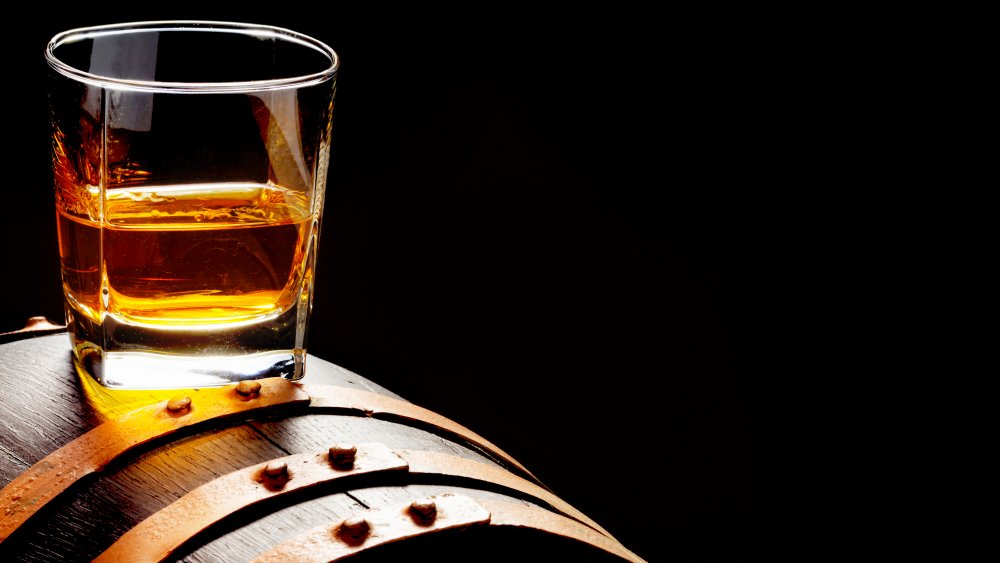Why You Need To Let Your Whiskey Breathe
Whiskey, unlike wine, does not continue to age after it has been bottled, and the flavor profile of the bottle as a whole does not change significantly with exposure to air, so there is no need to decant it. If you would like to experience all of the complexities of a single dram of a fine whiskey, however, expert advice recommends that you not drink your whiskey right away after pouring — instead, you should let it sit and rest a bit as you wait for the flavor to "wake up."
With whiskey, as with people, the older it is, the longer a rest it will require, but the Scotch Malt Whisky Society promises that the results will be well worth that wait.
Experts agree that letting whiskey breathe is the right thing to do
"I advocate letting a whiskey sit for one minute for every year of its age," Jim McEwan, retired master distiller at Bruichladdich Distillery, says. "With something that age, you can't be in a hurry. Enjoy it, savor it, and you will be rewarded."
Scotch Malt Whiskey Society ambassador Olaf Meier relates the tale of the "happy accident" that led him to agree that whiskey should be allowed to breathe before drinking. He tells of a time when a new bottle of whiskey arrived at The Vaults, the building where the SMWS holds its events. He said that at first sip, "I thought it was okay, but nothing out of the ordinary." Then the bar got busy and he let his glass sit for a few hours, but when he went back to finish it up, "it was unbelievably wonderful. The aroma was so intense and multifaceted."
McEwan and Meier both agree that adding a little water to whiskey can also help to release whiskey's aromas and thus enhance its flavor, but both recommend doing this very sparingly, if at all, particularly with older whiskeys.
Science explains why this works
Paul Hughes, assistant professor of distilling practice at Oregon State University, explains why you can taste more nuances in whiskey once you've let it sit for a while and/or added water. He says that at strengths up to 17 percent ABV, alcohol molecules are distributed evenly throughout the water that makes up the bulk of any alcoholic (or other) beverage. Once the ABV gets higher than that, the alcohol molecules tend to clump together in clusters. If you either add a small amount of water to your dram of whiskey or let it sit a while until a bit of the alcohol evaporates, this will release some of the alcohol molecules from their clusters and "open up" the whiskey to reveal more flavors.
Hughes also has reservations about adding water as opposed to allowing the gentle, natural evaporation process to take place. He says that watering down whiskey is always going to dilute its flavor and that "there are few things more tragic in the whiskey world than adding too much water." Hughes does propose a solution should that tragic circumstance happen to befall the glass you've just poured — in such a case, the only remedy is to add more whiskey.
That's not such a bad solution — after all, it's practically for medicinal purposes since whiskey is actually a lot healthier than you think. As they say in Scotland (according to the Scotch Whisky Experience YouTube channel), Slàinte mhath!


